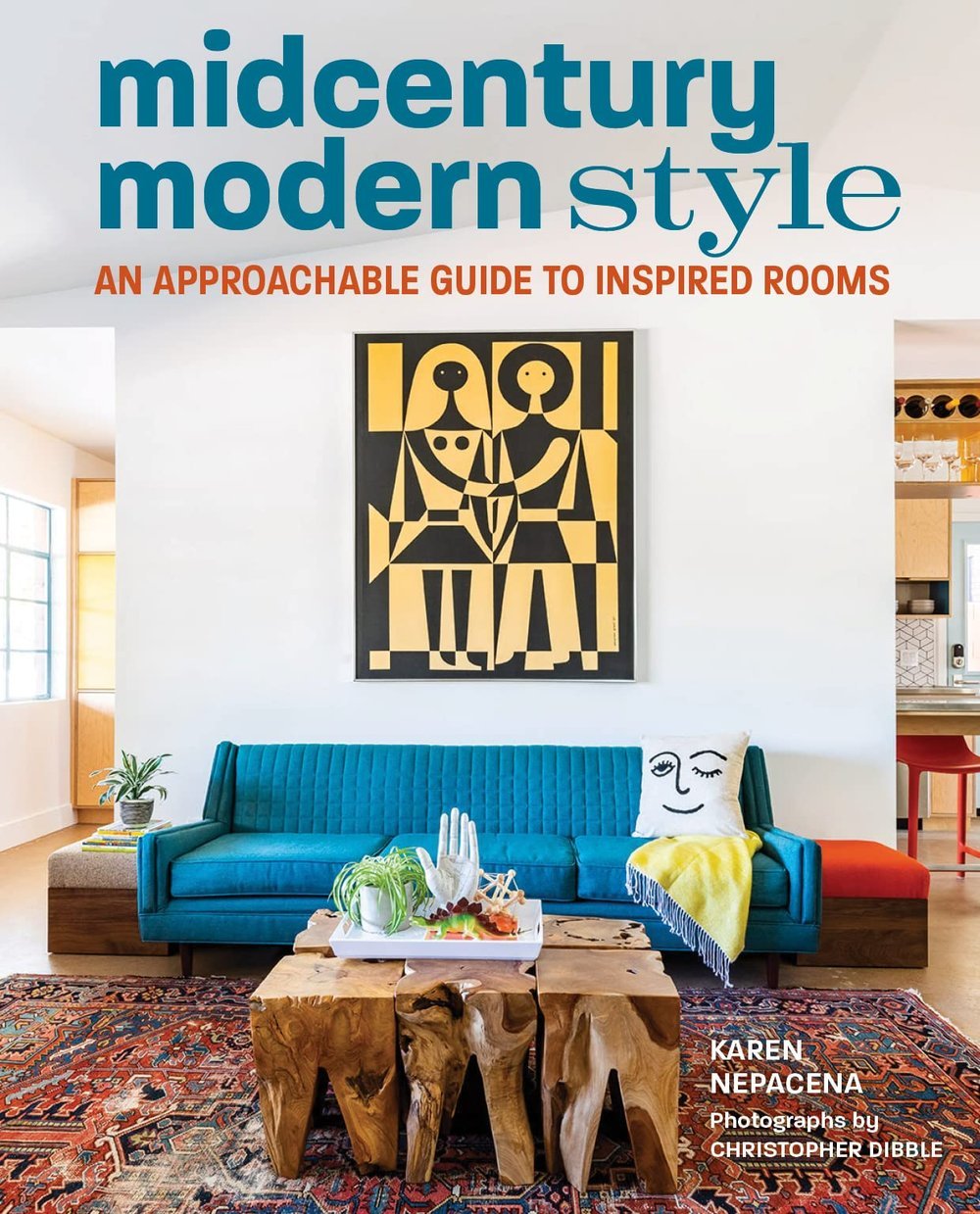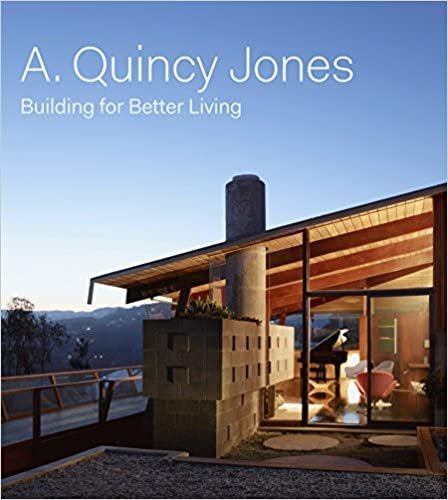18 Mid-Century Modern Coffee Table Books: Inspiration For The Home
Mid-century modern design is a style that has stood the test of time. From the sleek lines of Eames lounge chairs to the organic shapes of George Nelson's clocks, the aesthetic continues to be celebrated in interiors around the world. One of the best ways to explore and appreciate this iconic style is through coffee table books. These beautiful volumes not only provide visual inspiration, but also offer insight into the designers and movements that defined the era. Here are a few of the best mid-century modern coffee table books to add to your collection.
A significant portion of mid-century modern design can be traced back to California, where architects and designers were experimenting with new forms and materials. The state's booming post-war population and mild climate provided the perfect backdrop for homes that prioritized indoor-outdoor living and embraced the use of glass, steel, and concrete. From the Case Study Houses of the 1940s to the iconic Eichler homes of the 1950s and 1960s, California played a major role in shaping the mid-century modern aesthetic. These coffee table books not only showcase the work of California-based architects and designers, but also offer a glimpse into the cultural and societal influences that shaped the movement.
Eichler: Modernism Rebuilds the American Dream
Joseph Eichler was a pioneering developer who defied conventional wisdom by hiring progressive architects to design Modernist homes for the growing middle class of the 1950s. He was known for his innovations, including "built-ins" for streamlined kitchen work, for introducing a multipurpose room adjacent to the kitchen, and for the classic atrium that melded the indoors with the outdoors. For nearly twenty years, Eichler Homes built thousands of dwellings in California, acquiring national and international acclaim.
Eichler: Modernism Rebuilds the American Dream examines Eichler's legacy as seen in his original homes and in the revival of the Modernist movement, which continues to grow today. The homes that Eichler built were modern in concept and expression, and yet comfortable for living. Eichler's work left a legacy of design integrity and set standards for housing developers that remain unparalleled in the history of American building. This book captures and illustrates that legacy with impressive detail, engaging history, firsthand recollections about Eichler and his vision, and 250 photographs of Eichler homes in their prime.
Case Study Houses
The Case Study House program (1945–1966) was a unique event in the history of American architecture. Sponsored by Arts & Architecture magazine, the program sought to respond to the postwar building boom with prototype modern homes that could be both easily replicated and readily affordable to the average American.
Midcentury Modern Style:
An Approachable Guide to Inspired Rooms
This accessible guide shows how easy it is to bring midcentury modern touches to every room in the house whether you’re a seasoned designer or starting from scratch. Full of approachable guideposts to lead you, insider tips and tricks, and easy DIYs, you’ll learn how to create inspired, livable spaces full of mid-mod charm.
It may seem daunting to design a midcentury modern–inspired home, but up-and-coming interior designer Karen Nepacena shows that by using just a few design guideposts anyone can make any room feel like a set from Mad Men or The Queen’s Gambit. Showcasing real-life client redesigns, Nepacena goes room by room―and outside―offering bite-sized ways to create comfortable, stylish, and inviting spaces along the way.
Full of approachable insider tips and tricks, easy DIYs, and important historical context, you’ll learn how to create inspired, livable spaces full of mid-mod charm without the need for large-scale renovations or a big budget. Featuring the photography of Christopher Dibble.
Mid-Century Modern Architecture Travel Guide: West Coast USA
A must-have guide to one of the most fertile regions for the development of Mid-Century Modern architecture. This handbook - the first ever to focus on the architectural wonders of the West Coast of the USA - provides visitors with an expertly curated list of 250 must-see destinations. Discover the most celebrated Modernist buildings, as well as hidden gems and virtually unknown examples - from the iconic Case Study houses to the glamour of Palm Springs' spectacular Modern desert structures. Much more than a travel guide, this book is a compelling record of one of the USA's most important architectural movements at a time when Mid-Century style has never been more popular. First-hand descriptions and colour photography transport readers into an era of unparalleled style, glamour, and optimism.
Frank Lloyd Wright
A building by Frank Lloyd Wright (1867-1959) is at once unmistakably individual, and evocative of an entire era. Notable for their exceptional understanding of an organic environment, as well as for their use of steel and glass to revolutionize the interface of indoor and outdoor, Wright’s designs helped announce the age of modernity, as much as they secured his own name in the annals of architectural genius.
Eames: Beautiful Details
"Eames: Beautiful Details” celebrates the seamlessness and fluidity in which Charles and Ray Eames operated as both a husband and wife team and as designers unrestricted by traditionally professional boundaries. Select details of their life and work, from their refined designs to their innovative experiments, and even including images depicting the everyday poetic moments of their lives, and are shared here in this exhibit within a book.
Mies Van Der Rohe: Space - Material - Detail
Mies van der Rohe is one of the most important architects of the Modern movement. But how do Mies ideas on architecture and on the logic of construction relate to his built - and sometimes unbuilt - oeuvre? Mies Van Der Rohe: Space - Material - Detail by Edgar Stach investigates this question based on 14 projects, with a focus on the choice of detail and material. Specially produced three-dimensional drawings provide an easy-to-understand analysis of Mies construction concepts.
Mies
Unprecedented in scope and illustrated with more than 700 original drawings, plans, diagrams, and contemporary and archival photographs, Mies by Detlef Mertins is the most definitive monograph ever published on the modern master of architecture Mies van der Rohe. Mertins’ rich and highly readable text traces the aesthetic and intellectual context for all Mies’ work, with in–depth discussions of his most important projects. Featuring some of the twentieth century’s most iconic buildings, such as the Barcelona Pavilion in Spain, the Crown Hall at IIT, and the Seagram Building in New York, Mies paints a fascinating portrait of the famed architect whose contribution to the modern urban landscape cannot be overlooked.
William Krisel's Palm Springs: The Language of Modernism
This first major monograph chronicling the work and architectural philosophy of William Krisel features examples and insights from Krisel's own papers, culled from his personal collection as well as the extensive archives of the Getty Research Institute. Krisel's architectural drawings and renderings, as well as many archival photographs, highlight examples of his custom homes, mass-produced housing, and recreational facilities in Palm Springs and rest of the Coachella Valley.
Eichler Homes: Design for Living
More than a modern-day success story, Joseph Eichler changed the face of American architecture by creating the ultimate, affordable family home. Now, nearly 50 years after the phenomenon of the Eichler home, once a quintessential symbol of the American Dream, this beautifully illustrated volume chronicles both the success and ultimate demise of a legendary company. With over 100 full-color photographs of the homes' various models, as well as an introduction by architectural expert Sally B. Woodbridge and an essay by Eichler's son Ned, Eichler Homes tells the poignant story of a unique post-war business, and of a singular vision and unforgettable legacy that continue to inspire architects and designers around the world.
Steel and Shade: The Architecture of Donald Wexler
The first monograph one of the most influential and famous architects to leave his mark on modern and midcentury architecture.
A. Quincy Jones: Building For Better Living
Filled with beautiful photographs and informative essays, this volume presents the genius of A. Quincy Jones, whose collaborative nature provides a timely example for today's architects. While the architect A. Quincy Jones is most recognized for his glamorous homes for Los Angeles's cultural elite, he was equally dedicated to postwar Southern California's rapidly expanding middle class. As this fascinating book reveals, Jones and his collaborators were truly ahead of their time. Their vision of creating affordable, aesthetically pleasing structures prefigured the advent of several important architectural trends, such as sustainable building designs, maximization of available space, and sensitive site planning. Filled with images by noted photographer Jason Schmidt, as well as period photographs by Julius Shulman and others, this volume looks at every aspect of Jones's career. Original drawings, models, and furniture designs from the architect's personal archives illustrate a wide variety of projects featuring the hallmarks of Jones's style: soaring interior spaces, the blurring of indoors and out, laminated timber construction, angled walls, and innovative use of concrete, redwood, and glass. Essays explore Jones's quintessentially collaborative nature as he consulted with other noted architects, landscapers, interior designers, developers, and city planners to create buildings of lasting beauty and importance.
NorCalMod: Icons of Northern California Modernism
Many people think modernist architecture never flowered in California north of the San Fernando Valley. NorCalMod dispels that notion in a copiously illustrated history showcasing extraordinary examples of its proud contribution to the Bay Area and environs. As a style, modernist architecture was hotly debated in its day (why create modern structures where such distinctive Victorian and Arts and Crafts buildings already existed?) pulling heavyweights such as Frank Lloyd Wright, Lewis Mumford, and Walter Gropius into the fray. Ultimately, that existing "Bay Region Style" would remain the area's architectural hallmark, but not before hundreds of important modernist projects, many still standing yet unjustly neglected today, had been established. The remarkable photos in this book open our eyes to a long-lost chapter in the history of California architecture and make NorCalMod a volume to be enjoyed by those interested in California history and style as well as by architecture students and professionals.
Frank Lloyd Wright: The Masterworks
Detailed photographs capture thirty-eight of the famed architect's most notable buildings, including the Guggenheim Museum, Taliesin West, the Oak Park Home and Studio, and Fallingwater.
Case Study Houses. The Complete CSH Program 1945-1966
The Case Study House program (1945–66) was an exceptional, innovative event in the history of American architecture and remains to this day unique. The program, which concentrated on the Los Angeles area and oversaw the design of 36 prototype homes, sought to make available plans for modern residences that could be easily and cheaply constructed during the postwar building boom.
The program’s chief motivating force was Arts & Architecture editor John Entenza, a champion of modernism who had all the right connections to attract some of architecture’s greatest talents, such as Richard Neutra, Charles and Ray Eames, and Eero Saarinen. Highly experimental, the program generated houses that were designed to redefine the modern home, and thus had a pronounced influence on architecture―American and international―both during the program’s existence and even to this day.
TASCHEN brings you a monumental retrospective of the entire program with comprehensive documentation, brilliant photographs from the period and, for the houses still in existence, contemporary photos, as well as extensive floor plans and sketches.
The Architecture of John Lautner
John Lautner's sixty years in architecture comprise one of the great unexamined careers of the twentieth century. Rooted in a personal design philosophy that is the imaginative extension of the organic architectural theories of Frank Lloyd Wright (he was one of Wright's first apprentices), his exuberant designs and broad spectrum of approaches epitomize the landscape of southern California-from the fifties techno-optimism of the drive-in, freeway, and Cadillac tail fin to the structural innovation of opulent hilltop houses overlooking the ocean. Despite the extraordinary technical achievements of his concrete roofs, steel cantilevers, and double curves, dynamic engineering is never the main point of his work. The push-button glass walls and retracting roofs, however innovative, always serve to create humane spaces that allow occupants to commune with nature and themselves.
Lautner's career began at Wright's Taliesin in 1933 and continued after his arrival in Los Angeles in 1938. The book traces the unfolding of his protean conceptions up to his death in 1994. During the forties and fifties, he established his own architecture office and designed several small and medium-sized houses of unusual daring and freedom. His eye-popping designs for roadside coffee ships-the celebrated Googie's, with jazzy roof lines and Kaleidoscopic geometry-and California houses sporting hexagonal roofs, free-floating walls, and indoor-outdoor pools, are among these. In the sixties, the now-iconic Chemosphere, Elrod, and Silvertop houses were built. Extravagance and the refinement of his bold expressions mark the buildings of the final phase, the seventies to nineties. For these houses Lautner's athletic use of concrete reaches its zenith. The sweep of the curves and play between site and structure create dizzingly fantastic forms that are indicative of both the core and the frontiers of the twentieth-century American psyche. This volume, with its authorative text by Alan Hess and full-color and black-and-white photography by Alan Weintraub, splendidly captures the breathtaking interior spaces and extraordinary vistas that characterize the work of an architect who is increasingly seen as one of the great American masters of the twentieth century.
Julius Shulman. Modernism Rediscovered
The buildings burned in our memories, which to us represent the spirit of ’50s and ’60s architectural design, were those whose pictures were widely published in magazines and books; but what about those that got lost in the process, hardly or never appearing in publication?
The exchange of visual information is crucial to the development, evolution, and promotion of architectural movements. If a building is not widely seen, its photograph rarely or never published, it simply does not enter into architectural discourse. Many buildings photographed by Julius Shulman suffered this fate, their images falling into oblivion. With this book, TASCHEN brings them to light, paying homage to California Modernism in all its forms.
The abandoned files of Julius Shulman show us another side of Modernism that has stayed quiet for so many years. Bringing together nearly 200 forgotten masterpieces, Modernism Rediscovered pays tribute to these lesser known yet outstanding contributions to the modern architectural movement. It’s like sneaking into a private history, into homes that have rarely been seen and hardly appreciated as of yet.
Alexander Girard: popular edition
This massive monograph on seminal designer Alexander Girard covers virtually every aspect of his distinctive career. One of the most prolific mid-20th century designers, Girard's work spanned many disciplines, including textile design, graphic design, typography, illustration, furniture design, interior design, product design, exhibit design, and architecture. Exhaustively researched and lovingly assembled by designer Todd Oldham, this tome is the definitive must-have book on Girard's oeuvre.Many of the designs featured here have never before been published. Oldham carefully went through the entire Girard archive to uncover many treasures as well as all of the most recognizable works by Girard.
Girard is well known for his bold, colorful, and iconic textile designs for Herman Miller (1952-1975), which are extensively featured. These were often featured in conjunction with furniture designs by his contemporaries: Charles and Ray Eames, and George Nelson. His designs for La Fonda del Sol restaurant (1960) are an experiment with typography as a communication tool and large-scale environmental graphic. Textiles and Objects (1961) was a very influential New York store sponsored by Herman Miller that featured Girard's designs inspired by his travels and folk art collection. The Girard Foundation (1962) houses his own personal and extensive collection of folk art, textiles, toys, and objects from around the world. His complete environmental design for Braniff International Airways (1965) gave him the opportunity to work at all scales with color, graphics, textiles, and furniture design. He designed every aspect of the project himself, from the minute-sized sugar packets and the ticket counters to the graphic colors of the planes themselves.
Alexander Girard's playful yet sophisticated designs continue to inspire new generations of artists and designers. The breadth and scope of his work is truly remarkable. This highly anticipated tome is the first major retrospective of this very accomplished and prolific designer, and has been painstakingly edited by renowned New York-based designer Todd Oldham.


















